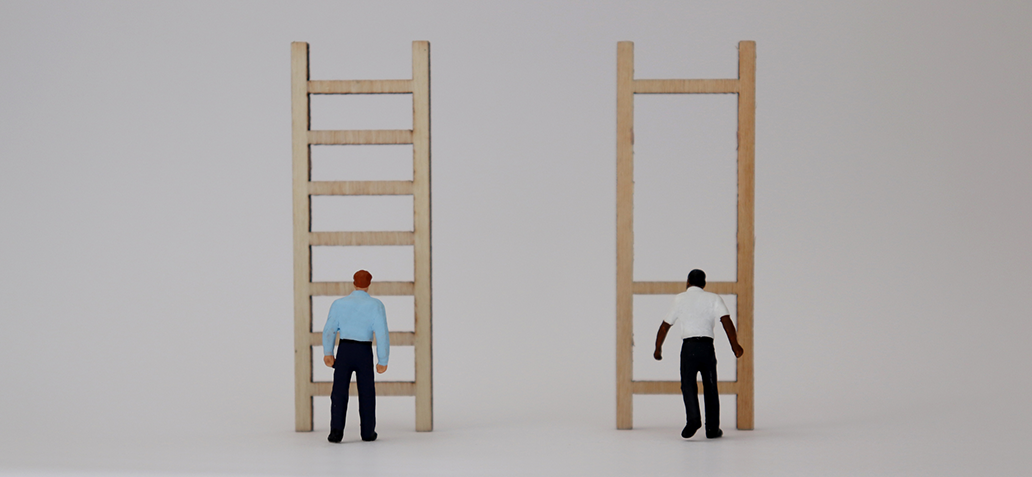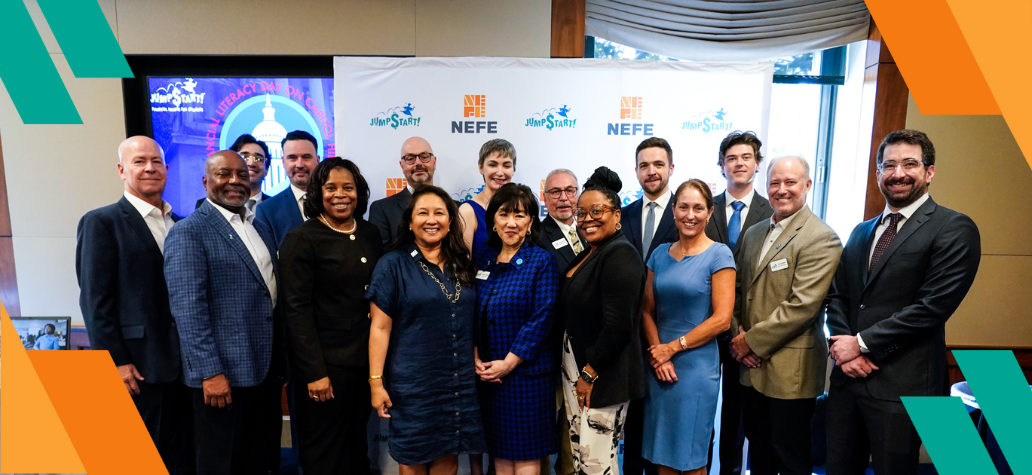Most of our understanding of people’s unique struggles against wealth inequality is one big data gap. The chroniclers and researchers of our financial positions and circumstances have left little space for financial trauma’s role (specifically, how groups targeted by racism, sexism and other forms of oppression are structurally positioned to experience economic violence) in the evolution of the widening wealth gap. Instead, people’s individual choices have overwhelmingly been taken to represent the reason why too many struggle against wealth inequality. When it comes to acknowledging that the central feature of our economic system is trauma—namely because it was premised on slavery—there is often nothing but silence.
And these silences are everywhere. The stories we tell ourselves and the summations we make about the ever-widening wealth gap are often marked by what Caroline Criado Perez, author of “Invisible Women,” calls the “silent presence” of our economically violent past and present. This is the trauma data gap.
The trauma data gap isn’t just about silence and the way personal finance research too often chooses not to place financial trauma in context. These silences, this data gap, have consequences. They impact us every day.
The impact can be relatively minor. For example, the suggestion that improving financial literacy to address the impact of rising costs of living can result in struggling individuals assuming their choices alone are why they are experiencing socioeconomic harm.
This impact is not life threatening, but what if it was?
These same suggestions are offered to income limited pregnant persons who are facing the reality of unpaid parental leave and the difficult transition to parenthood. For these individuals, the impacts of not placing financial trauma in context reminded me of what several pregnant persons told me when I studied the relationship between the maternal health crisis and financial trauma in Philadelphia: “We are all worried and...money is a huge factor."
Then, one brave person said, “When I received papers on what I could do to budget, I immediately had suicidal ideation. These papers aren’t going to put food on my table. I thought, ‘what am I going to do?’”
The consequences of relying on research and data that does not place financial trauma in context can be deadly. Therefore, the trauma data gap can be deadly.
One of the most important things to say about the trauma data gap is that it is not generally malicious, or even deliberate. Really, it is simply the product of a way of thinking and understanding money, value, wealth and worth that has been around for generations. It is a kind of not thinking and unaccountability to the fact that wealth and trauma are inextricably linked.
Having grappled with the trauma data gap for the last two years in my research, I realized that the influence financial trauma has on our individual and collective wealth-building capability cannot be understated. This is why I chose to focus not just on what financial trauma is, but also what financial trauma does to us. And in studying this, I could begin to address the trauma data gap.
The initial exploration
To put it bluntly, financial trauma makes us sick. It makes us unhappy. And in doing so, it eats away at our ability to change our own socioeconomic circumstances. To understand the first two consequences, you can return to my previous articles about the maternal health crisis and the problem with financial literacy. That way we can focus on my time researching how financial trauma keeps us from healing by preventing us from changing our own socioeconomic circumstances.
To understand this concept, we must remember that during the Reconstruction Era, those tasked with reinventing our economic system did not necessarily stretch their imaginations to the limit. Their effort to create an economic system that could be as prosperous as the one prior to the Civil War would mean that they would no longer premise an economic system on slavery, but that did not mean they wouldn’t premise the new system on the idea that capitalism works best when certain groups are restricted from full participation in the national economy.
If you can’t restrict or even completely block people from fully participating in the economy through slavery, then the next most effective mechanism would be traumatizing them. Just as Michelle Alexander deemed mass incarceration as the “New Jim Crow” in her book by the same name, financially traumatizing groups targeted by racism, sexism and other forms of oppression became the new method of perpetuating the wealth-related outcomes that we saw during slavery.
The idea is this: Make it so painful, scary and destructive to fully participate in the national economy…but only for certain groups. One way to accomplish this is to institutionalize financial shaming by repeatedly telling those who experience socioeconomic harm that they are to blame for that harm.
When we don’t place financial trauma in context, we punish people with brutality by judging their financial behavior. To address the trauma data gap, I knew I needed to unpack this further by studying nonparticipation.
As trauma researcher Reesma Menakem writes, “The central feature of any trauma response is speed. It has to be; otherwise, in the presence of genuine danger, your body wouldn’t be able to protect itself in time.”
When we are triggered, our primary goal is to restore our sense of safety as quickly as we can, and too often in our economic system, that means feeling compelled to make financial decisions like going to a check casher instead of a traditional bank.
It’s an act of self-protection and preservation. That is what makes financial trauma so destructive for people’s wealth-building capabilities. In protecting ourselves, we are forced to make financial decisions that are often not in our long-term financial best interest.
That is the evil genius of this system: It makes financial trauma a self-perpetuating cycle. People respond to financial shaming and abuse (defined within my framework as, “an event, action, or policy that inequitably reinforces the conditions that impair a person’s financial capability”) with nonparticipation in the economy, which then worsens their financial trauma, making it even more difficult to participate... and so the cycle continues.
Having uncovered this, I knew one step in closing the trauma data gap would be to measure nonparticipation as an indicator of (pervasive) financial trauma. As such, I spent a season trying to figure out how to measure this so that I could map the geographic spread of financial trauma across the country.
Measuring Nonparticipation as an Indicator of Financial Trauma
The process naturally starts with questions:
- What are examples of nonparticipation in the economy?
- Are all acts of nonparticipation indicators of financial trauma?
- If no, how can I distinguish between non-participatory behavior as stemming from financial trauma versus something else?
- Is nonparticipation more prevalent among certain demographic groups? Why?
- How can I evaluate nonparticipation quantitatively? Qualitatively?
Naturally, after writing all of these questions down, I took a two week break because I was overwhelmed. Then, I turned back to the “silent presence” of our economically violent past and present I iterated over when initially doing a literature review.
Most research on personal finance and wealth inequality studies individuals who are at least striving to fully participate in the national economy. Therefore, I explored building on those frameworks and methodologies to capture those who are not. For example, take the research on the unbanked population. Most research I reviewed provided the overall data and landscape regarding the issue. But, the “silent presence” of the institutionalization of financial trauma helped me go deeper. I learned that among the unbanked population there are those who choose to be unbanked (a trauma response), those who are forced to be unbanked (because of the structural barriers endemic to our banking system), and those that fall into both categories.
I began to think about other examples of nonparticipation that happens by choice, by design and both, and explored whether I could disaggregate the data that way. Then, I would substantiate my work through qualitative inquiry.
Currently, I am focusing on a few cities, one of which is Philadelphia, and am thinking about other examples of nonparticipation that happens by choice, by design and both. My brainstorming reminded me of ways I’ve even chosen—consciously and unconsciously—not to participate. Refinancing my mortgage when rates were low was one of them. After an incredibly traumatizing and stressful process of purchasing my first home, I just figured it was more valuable to enjoy my peace than have to deal with the potential discrimination I experienced before. This has been the story for far too many Black women, even my friend who runs a mortgage business. I knew that this was an example of my choice being both by design and something I consciously chose.
Once I disaggregate the data this way, I can substantiate my work through qualitative inquiry and tell a story about how nonparticipation directly influences our wealth-building capabilities.
That will be the purpose of the next piece in this series—to more adequately contextualize what financial trauma does to us and highlight how acting against our financial best interest are indicators of pervasive financial trauma. I will tell the stories of those who feel judged and are struggling to navigate their financial trauma. This is necessary because we must incorporate qualitative and quantitative data for a more accurate and comprehensive picture of financial trauma to close the wealth gap.
The subsequent pieces will be a reflection on my attempt to create a new measurement framework for financial trauma. Following the advice of my mentor—"Work through your questions as they come up.”—you may become as dizzy as I often feel when I’m trying to uncover the insights I look for in my research. It may feel like I’m meandering at times, but that just speaks to the depth of the breadth of work we must complete to advance wealth justice. These pieces are really a diary of how I worked through my questions as they came up.



